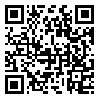year 9, Issue 3 (Autumn 2021)
Ann Appl Sport Sci 2021, 9(3): 0-0 |
Back to browse issues page
Download citation:
BibTeX | RIS | EndNote | Medlars | ProCite | Reference Manager | RefWorks
Send citation to:



BibTeX | RIS | EndNote | Medlars | ProCite | Reference Manager | RefWorks
Send citation to:
Rusdiana A. 3D Kinematics Analysis of Overhead Backhand and Forehand Smash Techniques in Badminton. Ann Appl Sport Sci 2021; 9 (3)
URL: http://aassjournal.com/article-1-1002-en.html
URL: http://aassjournal.com/article-1-1002-en.html
Sports Science Study Program, Faculty of Sports and Health Education, Universitas Pendidikan Indonesia, West Java, Indonesia , agus.rusdiana@upi.edu
Abstract: (8218 Views)
Background. This study aims to analyze the movement of backhand and forehand smash stroke techniques in badminton in three dimensions using a kinematics approach.
Objectives. The obtained results were analyzed using a descriptive and quantitative approach.
Methods. Furthermore, 24 male badminton players from the university student activity unit with an average age of 19.4 ± 1.6 years, height of 1.73 ± 0.12 m, and weight of 62.8 ± 3.7 kg participated in this study. The study was conducted using 3 Panasonic Handycams, a calibration set, 3D Frame DIAZ IV motion analysis software, and a speed radar gun.
Results. The data normalization from the kinematics values of the shoulder, elbow, and wrist joint motion was calculated using the inverse dynamics method. In addition, a one-way ANOVA test was used to identify differences in the kinematics of motion between two different groups. The obtained results showed that the speed of the shuttlecock during the forehand smash was greater than that during the backhand smash. In the maximal shoulder external rotation phase, two variables were identified to have the best results during the forehand smash, i.e., the velocity of shoulder external rotation and wrist palmar flexion.
Conclusion. The velocity of shoulder internal rotation, elbow extension, and forearm supination in the maximum angular velocity phase was higher when making a forehand smash.
Objectives. The obtained results were analyzed using a descriptive and quantitative approach.
Methods. Furthermore, 24 male badminton players from the university student activity unit with an average age of 19.4 ± 1.6 years, height of 1.73 ± 0.12 m, and weight of 62.8 ± 3.7 kg participated in this study. The study was conducted using 3 Panasonic Handycams, a calibration set, 3D Frame DIAZ IV motion analysis software, and a speed radar gun.
Results. The data normalization from the kinematics values of the shoulder, elbow, and wrist joint motion was calculated using the inverse dynamics method. In addition, a one-way ANOVA test was used to identify differences in the kinematics of motion between two different groups. The obtained results showed that the speed of the shuttlecock during the forehand smash was greater than that during the backhand smash. In the maximal shoulder external rotation phase, two variables were identified to have the best results during the forehand smash, i.e., the velocity of shoulder external rotation and wrist palmar flexion.
Conclusion. The velocity of shoulder internal rotation, elbow extension, and forearm supination in the maximum angular velocity phase was higher when making a forehand smash.
Full-Text [PDF 496 kb]
(8872 Downloads)
APPLICABLE REMARKS
APPLICABLE REMARKS
• The smash is a shot hit with power and speed down to your opponent's court. The average number of smashes executed in one match in the men's single category was 69 strokes, while for the women's singles category it was 51 strokes in All England Championship 2015.
• The technique to perform the badminton backhand and forehand smashes is very different from tennis or squash. In badminton, the backhand and forehand stroke can be used to perform powerful shots such as a tennis serve to get points.
• Before hitting the backhand smash, make sure that your arm is close to your body so as to get a better swing while hitting the shuttlecock. Use your non-racket arm to help you balance.
• The follow-through phase is an important movement. Complete the swing action all the way through. Use your non-racket arm to maintain balance as you may lose balance while performing this stroke.
• The technique to perform the badminton backhand and forehand smashes is very different from tennis or squash. In badminton, the backhand and forehand stroke can be used to perform powerful shots such as a tennis serve to get points.
• Before hitting the backhand smash, make sure that your arm is close to your body so as to get a better swing while hitting the shuttlecock. Use your non-racket arm to help you balance.
• The follow-through phase is an important movement. Complete the swing action all the way through. Use your non-racket arm to maintain balance as you may lose balance while performing this stroke.
Type of Study: Original Article |
Subject:
Sport Biomechanics and its related branches
Received: 2021/04/4 | Accepted: 2021/06/28
Received: 2021/04/4 | Accepted: 2021/06/28
Send email to the article author
| Rights and permissions | |
 |
This work is licensed under a Creative Commons Attribution-NonCommercial 4.0 International License. |








